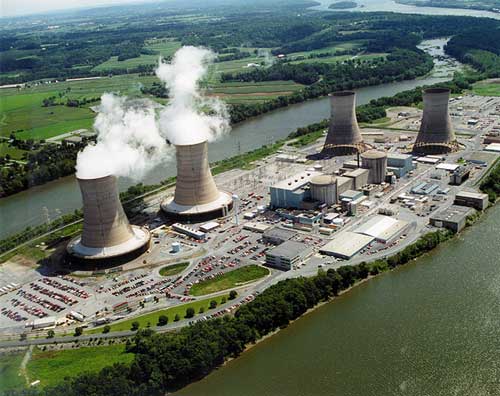Archive
Japan may raise severity of nuclear crisis to top level: report
 (Reuters) – Japan is weighing raising the severity level of its nuclear crisis at the Fukushima Daiichi nuclear power plant to a level 7 from level 5, putting it at par with the accident at the Chernobyl reactor in 1986, Kyodo news agency reported on Tuesday.
(Reuters) – Japan is weighing raising the severity level of its nuclear crisis at the Fukushima Daiichi nuclear power plant to a level 7 from level 5, putting it at par with the accident at the Chernobyl reactor in 1986, Kyodo news agency reported on Tuesday.
Kyodo said the government’s Nuclear Safety Commission has estimated the amount of radioactive material released from the reactors in Fukushima, northern Japan, reached a maximum of 10,000 terabequerels per hour at one point for several hours, which would classify the incident as a major accident according to the INES scale.
The scale, short for International Nuclear and Radiological Event Scale, is published by the International Atomic Energy Agency and ranks nuclear and radiological accidents and incidents by their severity from 1 to a maximum of 7.
Japan had previously assessed the accident at reactors operated by Tokyo Electric Power Co, which engineers are still trying to bring under control, at level 5, the same level as the Three Mile Island accident in 1979.
On March 11 a 9.0 magnitude earthquake and a massive tsunami triggered the nuclear disaster where reactors at the Fukushima Daiichi complex were crippled due to a loss of power which disabled cooling functions.
A spokesman for the Nuclear and Industrial Safety Agency, Japan’s nuclear safety watchdog, said on Tuesday that the level of the Fukushima incident was still a 5 and that he was unaware of any move by the government to raise the level.
U.S. Will Build Five New Nuclear Reactors by 2020, New Energy Finance Says
 The U.S. will build five new nuclear reactors by 2020 and ignore calls to scale back plans in the wake of Japan’s nuclear accident, said Chris Gadomski, an analyst at Bloomberg New Energy Finance.
The U.S. will build five new nuclear reactors by 2020 and ignore calls to scale back plans in the wake of Japan’s nuclear accident, said Chris Gadomski, an analyst at Bloomberg New Energy Finance.
“We’ll see a reassessment and reevaluation and then stay the course,” Gadomski said today at a conference in New York today. Plans to build the five reactors are already underway, he said, and “We don’t see that changing.”
No new nuclear plants have been built in the U.S. since the 1979 near-meltdown at Three Mile Island. Interest in atomic energy has gained as a way to curb greenhouse gas emissions that contribute to global warming, and the Obama administration has offered loan guarantees to developers of reactors, which account for a fifth of total U.S. electricity.
“We are looking first and foremost at keeping our current fleet operating safely,” said Andrea Sterdis, senior manager of nuclear expansion at Tennessee Valley Authority, a federal power supplier that operates four reactors in the U.S. South. She spoke at the conference hosted by New Energy Finance.
The biggest threat to new nuclear power plants may be the low cost of natural gas, which can be used to fuel power stations that are quicker and cheaper to build than atomic- fueled facilities, said said Edward Kee, vice president of NERA Economic Consulting.
“Everything in the U.S. is challenged by cheap natural gas,” Kee said at the conference.
Japan may have hours to prevent nuclear meltdown
NEW YORK (Reuters) – Japanese officials may only have hours to cool reactors that have been disabled by Friday’s massive earthquake and tsunami or face a nuclear meltdown.
Tokyo Electric Power Co (TEPCO) (9501.T) is racing to cool down the reactor core after a highly unusual “station blackout” — the total loss of power necessary to keep water circulating through the plant to prevent overheating.
Daiichi Units 1, 2 and 3 reactors shut down automatically at 2:46 p.m. local time due to the earthquake. But about an hour later, the on-site diesel back-up generators also shut, leaving the reactors without Read more…

![[Most Recent Quotes from www.kitco.com]](https://i0.wp.com/www.kitconet.com/charts/metals/gold/t24_au_en_usoz_2.gif)
![[Most Recent Quotes from www.kitco.com]](https://i0.wp.com/www.kitconet.com/charts/metals/silver/t24_ag_en_usoz_2.gif)

You must be logged in to post a comment.